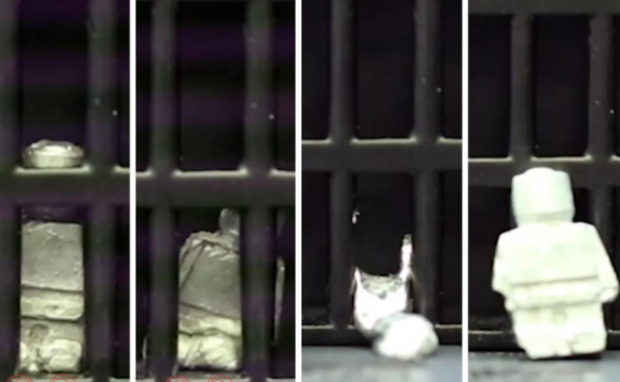Spider robot smaller than a coin can fit in tight spaces
University of Colorado Boulder researchers have created a robot that can change shape to fit tight spaces. They built the CLARI after your typical six-legged critter, which is only two centimeters wide. More importantly, its shape-shifting ability lets it move through narrow areas in various directions, opening a wide range of real-life applications.
Take Japan’s minuscule cockroach robot as an example. It is 6 centimeters long, runs on solar power, and enables rescue crews to locate survivors underneath rubble from a natural disaster. Similarly, the Colorado experts want their spider robot to fit into computer access ports and jet engines to inspect equipment quickly.
This article will discuss how the University of Colorado researchers’ spider robot works. Later, I will cover similar robotics projects from around the world.
How does the spider robot work?
University of Colorado Boulder doctoral student Heiko Kabutz always loved building massive mechanical titans. However, he became interested in smaller bots when he visited the laboratory of Kaushik Jayaram, an assistant professor in the Paul M. Rady Department of Mechanical Engineering.
“Initially, I was interested in building bigger robots,” said Kabutz, “but when I came to Jayaram’s lab, he really got me interested in building bioinspired robots at the insect scale.”
“Since these robots can deform, you can still have slightly larger sizes,” the doctoral student added. “If you have a slightly more size, you can carry more weight. You can have more sensors.”
“You’ll have a longer lifetime and be more stable. But when you need to, you can squish through and go into those specific gaps, such as inspection access ports in a jet engine.”
The University of Colorado website says Kabutz and Jayaram call their robot the CLARI. The acronym stands for Compliant Legged Articulated Robotic Insect.
You may also like: Professor recycles coffee as 3D printing material
As Kabutz explained, their robot can “transform its shape from square to long and slender when its surroundings became cramped.” Its basic form resembles a square with one leg on its four sides.
However, it could shrink further or elongate to resemble a crab. As a result, the bot can shift from being 34 millimeters or 1.3 inches wide in its square form to roughly 21 mm or 0.8” in its elongated form.
“What we want are general-purpose robots that can change shape and adapt to whatever the environmental conditions are,” Jayaram said. “In the animal world, that might be something like an amoeba, which has no well-defined shape but can change depending on whether it needs to move fast or engulf some food.”
Are there similar robotics projects?

Chinese engineer Changfeng Pan and his team created a machine similar to Jayaram and Kabutz’s spider robot. It can fit through tight spaces, but it changes shape to do so!
Pan and the other researchers created a new phase-shifting material called a “magnetoactive solid-liquid phase transitional machine” for their revolutionary robot. They created it by embedding magnetic particles in gallium.
It is a unique metal with a low melting point of 29.8 °C or 85.64 °F that reacts to magnetic fields. Senior author and mechanical engineer Carmel Majidi said this magnetic material has two roles.
First, it lets the mixture respond to alternating magnetic fields. The particles accumulate energy from magnetic fields, gaining heat and melting the gallium.
You may also like: Singapore patrol robots stoke fears of surveillance state
Second, the embedded particles enable the shape-shifting robot to move in response to a magnetic field. Magnets have two poles: north and south.
Magnets with opposite poles attract each other, but ones with the same poles repel each other. Let us say the particles have a north pole.
You could use a south pole magnetic field to attract the particles and the gallium to you. They shared a video demonstrating how their robot could squeeze out of a miniature cage and revert to its initial form, similar to the T-1000 robot from the Terminator 2 film.
Conclusion
A student and a professor from the University of Colorado created a spider robot that can squeeze through tight gaps. Heiko Kabutz and Kaushik Jayaram see huge applications for their miniature robot.
Kabutz says their arachnid bot could help inspect machines from the inside. As a result, repair crews could perform maintenance on large machines without dismantling them.
Gain more information about the CLARI shape-shifting robot on the Wiley Online Library. Check out more digital tips and trends at Inquirer Tech.